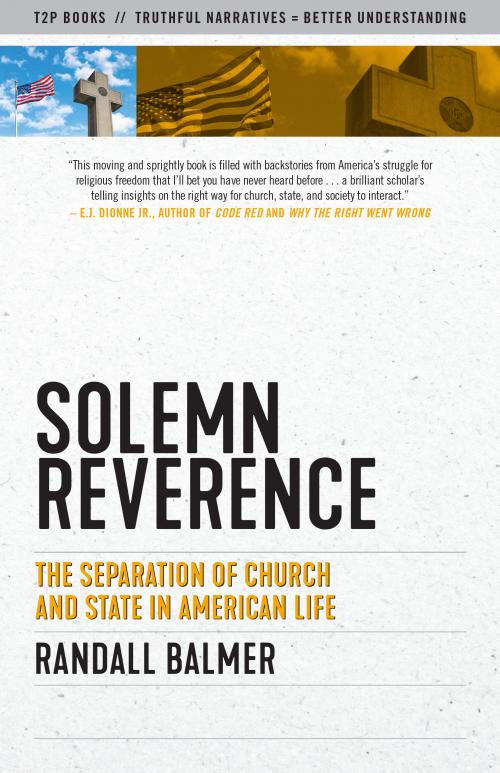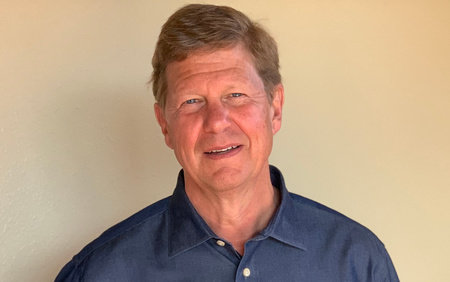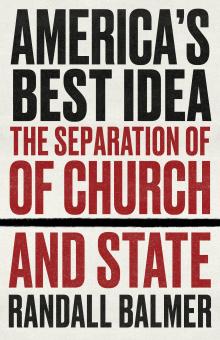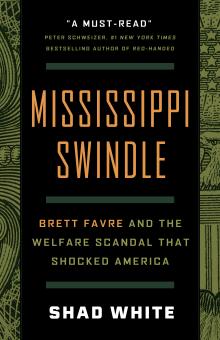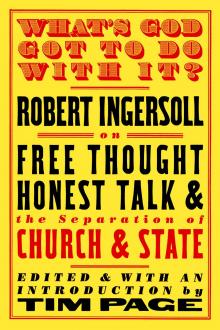Excerpt
Preface
The First Amendment, with its insistence on the separation of church and state, religion and politics, is under attack as never before. “Congress shall make no law respecting an establishment of religion, or prohibiting the free exercise thereof,” the initial clause of the First Amendment reads, and those sixteen words have served both government and faith remarkably well for over two centuries. And yet various interests have sought in recent years to chip away at what Roger Williams, the founder of the Baptist tradition in America, called the “wall of separation” between church and state.
During the 2016 presidential campaign, for example, Donald Trump promised to repeal the Johnson Amendment, which prohibits the use of contributions to tax-exempt organizations, including religious groups, for the support of political candidates. The family of the Trump administration’s secretary of education worked for decades to divert taxpayer money into private and religious schools, an enterprise made infinitely easier by the Supreme Court’s misbegotten Espinoza v. Montana Department of Revenue decision in 2020. In defiance of the establishment clause of the First Amendment, the Religious Right generally has supported public prayer in public schools and the posting of religious symbols and sentiments in public places. And, both ironically and tragically, in 1979 the largest Baptist denomination in the country, the Southern Baptist Convention, effectively abandoned its historic role of patrolling the wall of separation between church and state.
I served as an expert witness defending the First Amendment’s prohibition against religious establishment. The case took place in Alabama after Roy S. Moore, chief justice of the Alabama Supreme Court, placed a granite monument emblazoned with the Ten Commandments in the lobby of the judicial building in Montgomery. Had Moore allowed other religious representations in that space — or had he honored a request from the Alabama Atheists (both members, no doubt!) — I would have had no objection. But Moore had insisted on the Ten Commandments only, a clear violation of the establishment clause of the First Amendment, which prohibits an “establishment of religion.”
My testimony then, and one reiterated in this book, is that the First Amendment is part of the genius of American life. It has protected the common good from religious factionalism, and it has ensured the integrity of faith from too close an alliance with the state.
Although unprecedented, the impetus for religious disestablishment as embodied in the First Amendment grew out of disparate impulses dating back at least to the Protestant Reformation of the sixteenth century. Martin Luther had emphasized the priesthood of believers, each individual’s responsibility before God, which led almost inevitably (if not immediately) to the concession that everyone might approach God differently from his or her neighbor. The very splintering of Christianity after the Reformation demanded some sort of accommodation to its diversity. Several of the American colonies had done just that — Thomas Jefferson himself cited the examples of New York and Pennsylvania in his Notes on the State of Virginia, written in 1781 — though the established religions in other colonies, such as the Anglicans in Maryland and Virginia, and the Congregationalists in Massachusetts and Connecticut, stubbornly defended their establishment status. Other early voices include such figures and movements as Isaac Backus and the Separate Baptists in Massachusetts or William Livingston and the Presbyterian party in New York as influential opponents of religious establishment. Most often, however, when historians retrace the steps of religious disestablishment in America their paths lead to Roger Williams, founder of the Baptist tradition in America, and Thomas Jefferson, one of the nation’s founders and the country’s third president.
It’s important to stipulate here at the outset that the phrase church and state has evolved into a kind of shorthand for understanding the relationship between two much larger, albeit amorphous, entities. One of the characteristics of the Atlantic seaboard during the colonial period was its religious diversity, ranging from Puritans in New England to Anglicans in the South. In between, groups as diverse as Baptists in Rhode Island, the Dutch Reformed in the Middle Colonies, Swedish Lutherans in Delaware, Jews in New York City, Presbyterians in New Jersey, Catholics in Maryland, and Quakers in New Jersey and Pennsylvania all established a toehold on the religious landscape of colonial America. In addition, Pennsylvania alone sheltered such diverse religious minorities as Lutherans, Mennonites, Moravians, and Schwenckfelders.
Not all groups existed in perfect harmony. The Puritan government in Massachusetts hanged Quakers on Boston Common. In 1649 Maryland, founded by Roman Catholics, passed a Toleration Act ensuring religious liberty, but it was rescinded five years later after Puritans seized control of the colony. Under Edward Hyde, Viscount Cornbury, the governor of New York, the colonial government sowed unrest in Dutch Reformed congregations as a way of preferring the Church of England. In some places, authorities sought to coerce religious uniformity and conformity. In colonial Virginia, for example, the Church of England was the established religion, and some magistrates were zealous in defense of Anglican prerogatives. Baptists, because of their insistence on religious liberty, often felt the sting of persecution. Baptists were thrown in jail in Spotsylvania in 1768 for disturbing the peace because of their preaching. A judge named Edmund Pendleton sentenced Baptist preachers to jail for what one contemporary called “the heinous charge of worshiping God according to the dictates of their own consciences.” A sheriff brutally horsewhipped a Baptist minister, and a “gang of well-dressed men” nearly drowned two other Baptists by holding their heads underwater in a nearby river, a cynical riff on the Baptist insistence on believers’ baptism by full immersion.
Amid all this diversity and persecution, some colonists began to warn publicly against the dangers of religious establishment. “It is not to be doubted,” William Livingston, a graduate of Yale, activist in New York politics, and later the first governor of New Jersey, wrote in 1768, that “every man who wishes to be free will by all lawful ways in his power oppose the establishment of any one denomination in America.” Remarking on “the inconveniences and mischiefs of religious establishments,” Livingston concluded: “Religious establishments are very hardly kept from great corruption.”
By the middle of the eighteenth century, it had become clear that no religious group would emerge with anything approaching hegemony. When Congress appointed a committee on July 4, 1776, to design a seal for the new nation, the committee recommended E Pluribus Unum — out of many, one — as the nation’s motto, a nation comprising people representing a great variety of ethnicities and religions.
The First Amendment emerged from this multicultural miasma; even if the founders wanted to establish a “church,” which would it be? As a consequence, in the place of a dominant single institution (a “church”), multiple groups and associations attempted to make claims to authority, especially in the early national period. This process produced the marketplace of religious associations, movements, and institutions that we have generally called religious pluralism.
On the political side, state, federal, and administrative institutions have undertaken to coexist while sharing political power (and authority) in contested ways. The phrase church and state remains useful, but what we really have is multiple religious movements and organizations confronting several layers and levels of political movements and structures. In sum, this presents us with a dynamic “system” that defies easy description. It is rather a messy set of shifting alignments attempting to frame the exercises of power legitimated by disparate claims to religious and political authority.
As should be clear by now, I’m a historian, not a legal scholar. Volumes and volumes have been written by lawyers and legal experts about the First Amendment and the meaning of various cases decided by the Supreme Court over the decades. This book is not an addition to that corpus; I defer to those experts and their technical analyses. Instead, as a student of American religious history, I offer here some reflections on the First Amendment and the relationship between church and state — those complicated, amorphous entities — throughout American history.
Were I to identify a foil for this book, it would be those voices breezily claiming that the United States is, and always has been, a Christian nation. That assertion is demonstrably false. Those same voices have sought, and continue to seek, a diminution of the First Amendment and its wall of separation between church and state. That, in my view, is a dangerous course. I say that not as a secularist trying to root out all expressions of religion, but as someone who believes along with Roger Williams that religion functions best from the margins and not in the councils of power; that the integrity of the faith suffers from too close an association with the state.
The First Amendment has been resilient over the years, over the decades. But that does not mean that its future is secure. Those who believe in the separation of church and state must continue to patrol that wall of separation. Some on the left argue that voices of faith have no place in the arena of public discourse, while those on the right don the mantle of victim, insist that the United States is a Christian nation, and engage in rhetorical Kabuki to assert that the First Amendment does not mandate the separation of church and state.
Both positions represent misunderstandings of the First Amendment. The long sweep of American history amply demonstrates the genius of the First Amendment, this grand experiment of constructing a government without the interlocking apparatus of an established religion.

